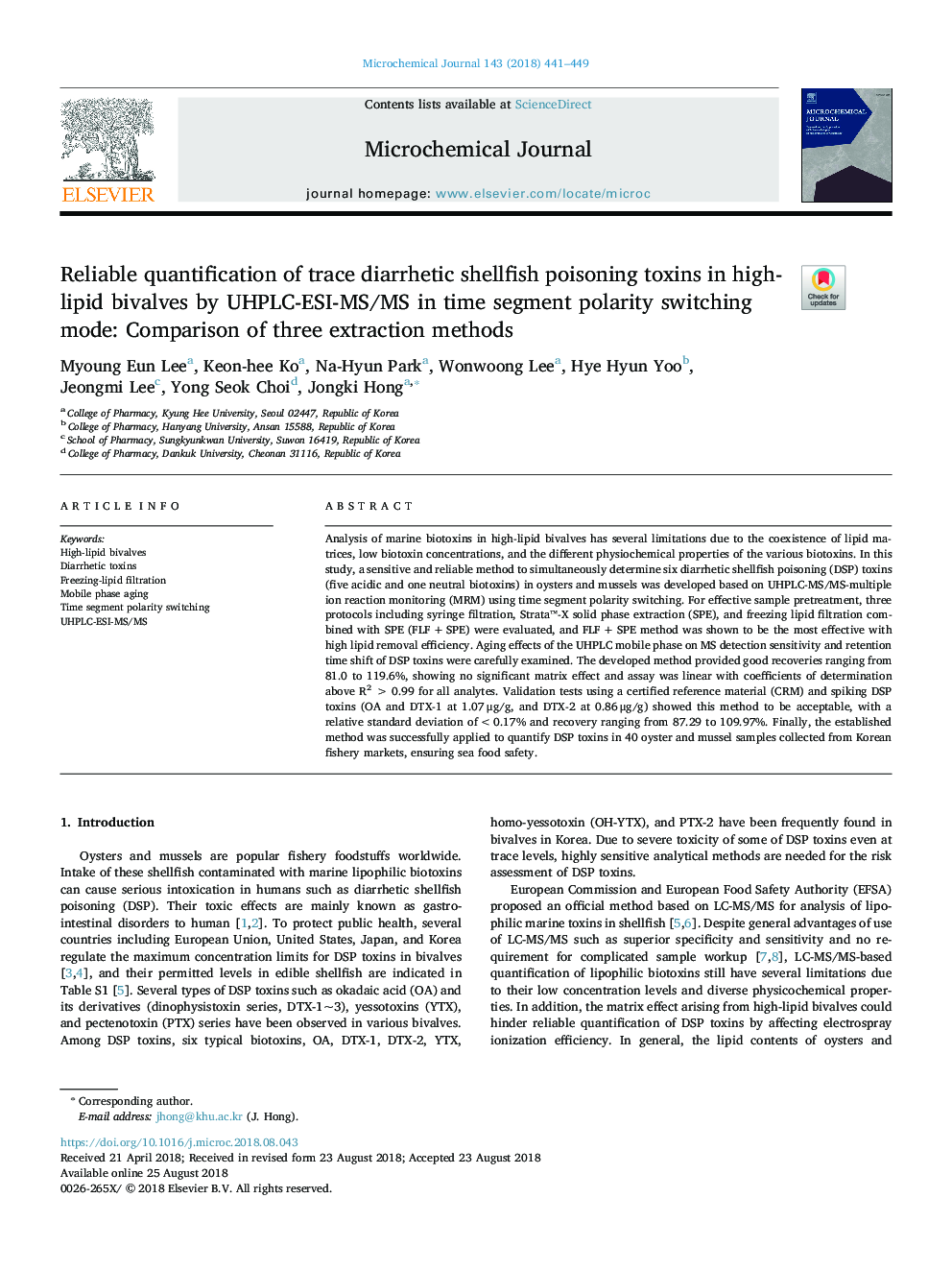| Article ID | Journal | Published Year | Pages | File Type |
|---|---|---|---|---|
| 11005772 | Microchemical Journal | 2018 | 9 Pages |
Abstract
Analysis of marine biotoxins in high-lipid bivalves has several limitations due to the coexistence of lipid matrices, low biotoxin concentrations, and the different physiochemical properties of the various biotoxins. In this study, a sensitive and reliable method to simultaneously determine six diarrhetic shellfish poisoning (DSP) toxins (five acidic and one neutral biotoxins) in oysters and mussels was developed based on UHPLC-MS/MS-multiple ion reaction monitoring (MRM) using time segment polarity switching. For effective sample pretreatment, three protocols including syringe filtration, Strataâ¢-X solid phase extraction (SPE), and freezing lipid filtration combined with SPE (FLFâ¯+â¯SPE) were evaluated, and FLFâ¯+â¯SPE method was shown to be the most effective with high lipid removal efficiency. Aging effects of the UHPLC mobile phase on MS detection sensitivity and retention time shift of DSP toxins were carefully examined. The developed method provided good recoveries ranging from 81.0 to 119.6%, showing no significant matrix effect and assay was linear with coefficients of determination above R2â¯>â¯0.99 for all analytes. Validation tests using a certified reference material (CRM) and spiking DSP toxins (OA and DTX-1 at 1.07â¯Î¼g/g, and DTX-2 at 0.86â¯Î¼g/g) showed this method to be acceptable, with a relative standard deviation of <0.17% and recovery ranging from 87.29 to 109.97%. Finally, the established method was successfully applied to quantify DSP toxins in 40 oyster and mussel samples collected from Korean fishery markets, ensuring sea food safety.
Related Topics
Physical Sciences and Engineering
Chemistry
Analytical Chemistry
Authors
Myoung Eun Lee, Keon-hee Ko, Na-Hyun Park, Wonwoong Lee, Hye Hyun Yoo, Jeongmi Lee, Yong Seok Choi, Jongki Hong,
